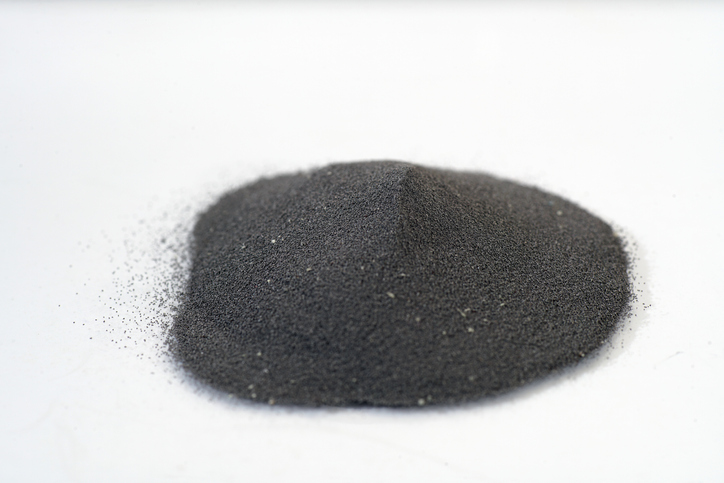Many metals are used in their pure powder form in the manufacturing of various products. There are many grades of iron powder, as they are categorized based on their purity, grain size, density, and the manufacturing method. So the iron powder will be modified to fit into the application.
Iron Powder Properties
Iron powder is iron particle aggregates in sizes that may range from 20-200 μm. When it comes to manufacturing processes, the iron powder will be classified into three different categories of electrolytic iron powder, atomized iron powder, and reduced iron powder.
- Electrolytic iron powder: Made using a chemical electrolysis solution to create the highest purity metals
- Atomized iron powder: Made when using high pressured water to cool and atomized molten steel, then a heat treatment is added within a hydrogen environment.
- Reduced iron powder: made when using coke to reduce mill scale as a heat treatment within a hydrogen atmosphere is used afterward
The manufacturing process and purity of the iron powder will dictate which type of applications that this metal will be used in to provide certain characteristics. Some common uses include the following:
Impurity Removal
Iron powder may be used to further purify fuels that are gasified. It finds sulfur and oxidizes it without impacting the rest of the melt.
Magnetic Paints
Iron possesses magnetic properties. When the iron powder is added to paints, it may be applied to surfaces such as magnetic boards to allow the surface to attract magnets.
Weight Filler
Iron powder may be applied in small, consecutive amount to materials such as polymer and plastic to increase the substance’s weight over time. The iron powder spreads evenly and uniformly throughout as it works well as a filler.
Powder Cutting
Iron powder has the property of increasing the temperatures of open flame. It may be used with an oxy-acetylene torch to cut through steel more efficiently.
Heat Conductivity Enhancements
For polymers to withstand and transfer heat well, iron powder will be added to the products. The iron powder helps to conduct heat and higher temperatures.
Sintering
Instead of cutting products from metals, manufacturers take iron powder and have it go through the sintering process. Sintering involves pressing and compacting the iron powder into the desired form to create components used in numerous industries.
Friction Materials
Components may require a surface that helps to create friction to perform a function, such as brake pads or the lining on brake drums. Iron powder is added into metals as a filler to provide additional durability and wear resistance as it helps to transfer heat.
Here at Belmont Metals, we offer powdered metals for the use of various manufacturing applications, including cast iron powder. Contact us for more information about our product selections.

